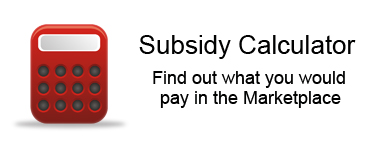The IRS and Department of the Treasury have published a much anticipated Notice of Proposed Rulemaking containing proposed regulations relating to health insurance premium tax credits, minimum value of employer sponsored group health plans, and the interaction of wellness incentives, minimum value, and affordability.
This Notice of Proposed Rulemaking provides important guidance for employers to consider in determining the affordability of self-only coverage under the Section 4980H proposed regulations and in determining the minimum value of the group health plan. Each of these determinations are critical to avoiding potential Employer Shared Responsibility tax penalties under Section 4980H(b) of the Patient Protection and Affordable Care Act.
One highlight from the Notice of Proposed Rulemaking is guidance concerning the impact of wellness incentives on the affordability of employer sponsored group health plans. Generally, employers may face penalties under Section 4980H(b) of PPACA if the employee share of the premium cost for self-only coverage exceeds 9.5% of that employee’s income under three affordability safe harbors contained in the Employer Shared Responsibility proposed regulations. An open question that was discussed at length at the recent public hearing on the Employer Shared Responsibility proposed regulations was the use of wellness incentives to calculate affordability. When determining affordability under the proposed safe harbors, must an employer use the premium cost including any available wellness incentives? Or, is an employer prohibited from factoring in wellness incentives when applying the affordability safe harbors? The Notice of Proposed Rulemaking released today provides a proposed answer to this question. Consistent with the wellness regulations released last November, the Notice of Proposed Rulemaking provides that wellness incentives tied to the reduction or prevention of tobacco use may be counted when determining affordability under the proposed safe harbors. However, other wellness incentives, such as incentives for completing a health risks assessment, biometric screening, or meeting other health targets, like BMI or cholesterol, may not be counted when determining affordability. This proposed rule provides an incentive for employers to either engage in or continue administering wellness programs designed to reduce or prevent tobacco use.
Similarly, employers may account for available wellness incentives tied to the reduction or prevention of tobacco use that affect a plan’s deductible or cost-sharing when calculating the plan’s minimum value.
Additional guidance is provided regarding the calculation of minimum value and the impact of employer contributions to an HSA or amounts available to employees through an HRA on minimum value. The IRS and Department of the Treasury have also described three design based safe harbors, modeled after common plan designs, that may be satisfied in order to comply with the minimum value requirement. These safe harbors are in addition to the results generated by inputting a plan’s benefits into the minimum value calculator developed by the Department of Health and Human Services (HHS) or obtaining an actuarial certification of the minimum value of the plan.
Although many employers have advocated for flexibility to use available wellness incentives to determine affordability. While the additional flexibility provided by this Notice of Proposed Rulemaking is welcomed by employer plan sponsors, many employer advocates remain concerned that this rule will provide a disincentive for employers to implement aggressive wellness programs designed to improve the overall health of their employees.
For additional information, see the Notice of Proposed Rulemaking. The Health Affairs Blog has also published a useful summary of the highlights in the Notice of Proposed Rulemaking. On May 2, Reuters, The Hill, and Forbes also reported on these new regulations.


